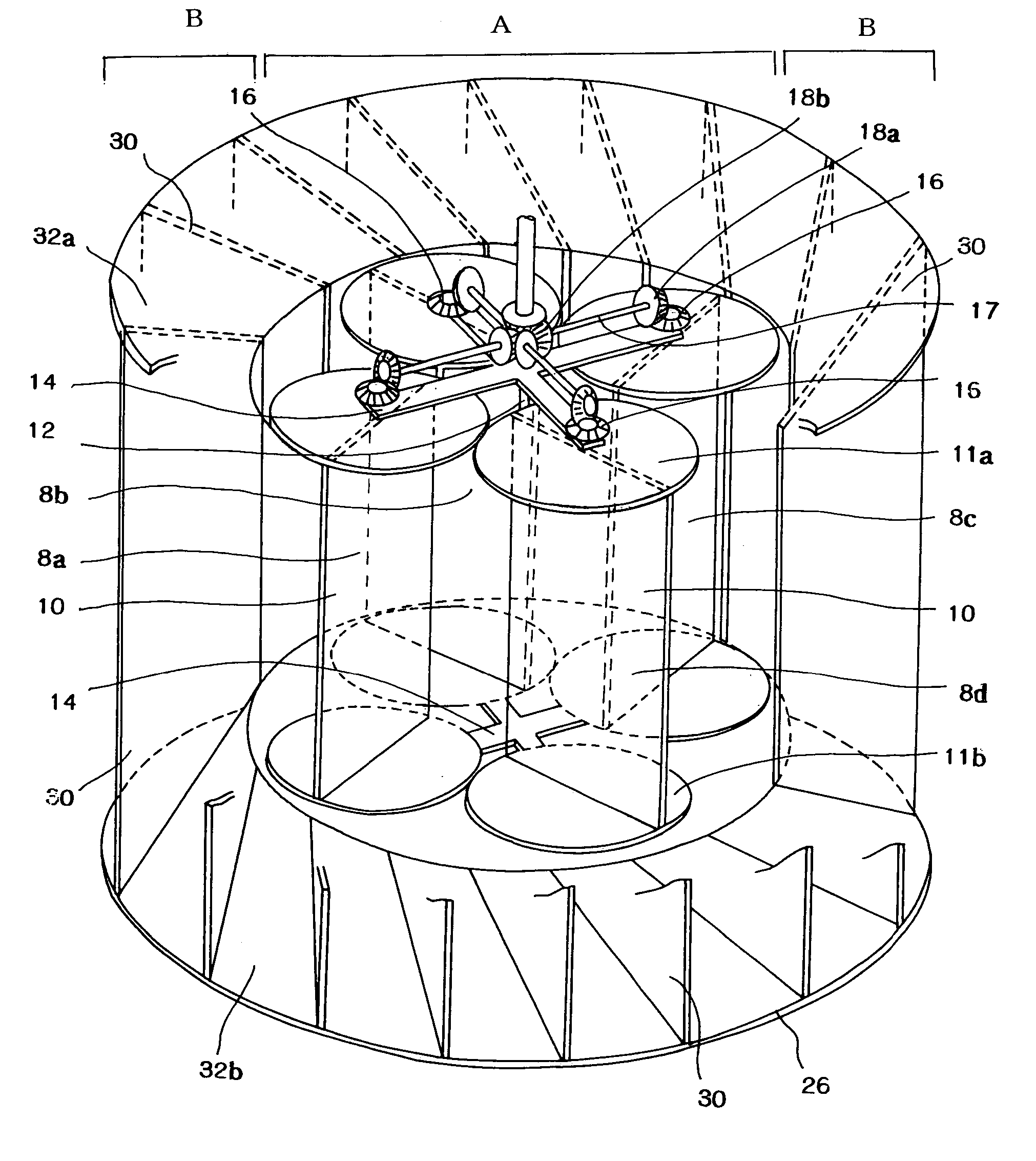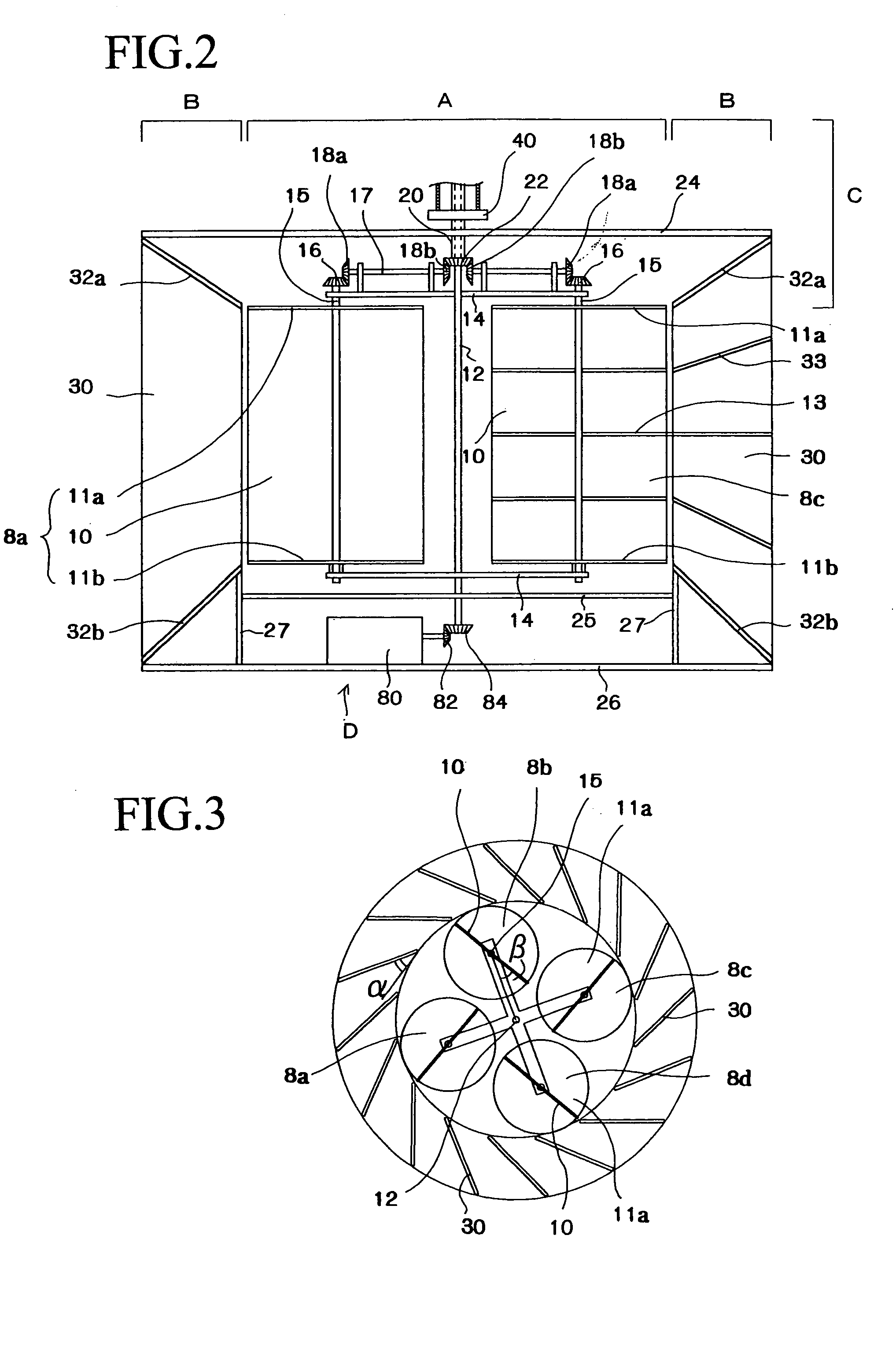Vertical shaft driving device for vertical wind mills or the like and electric power generator using the same
a technology of vertical shaft windmills and driving devices, which is applied in the direction of rotating machines/engines, renewable energy generation, machines/engines, etc., can solve the problems of large torque of drag-based vertical shaft windmills, low rotational speeds and energy conversion efficiency thereof, and hindered rotation of windmills. achieve the effect of reducing the drag force working to the blades, reducing the drag force, and increasing the wind speed
- Summary
- Abstract
- Description
- Claims
- Application Information
AI Technical Summary
Benefits of technology
Problems solved by technology
Method used
Image
Examples
Embodiment Construction
[0074]Preferred embodiments of the present invention, in which the vertical shaft driving device is applied to vertical shaft wind mills, will now be described in detail with reference to the accompanying drawings.
[0075]FIG. 1 is a perspective view of an embodiment of the vertical shaft wind mill relating to the present invention, and FIG. 2 is a front view of the vertical shaft wind mill. The vertical shaft wind mill of the present embodiment has: a cylinder section A, in which rotary blades are capable of moving along a circular orbit; a fixed vane section B circumferentially provided around the cylinder section A; a rotation control unit C for controlling a rotational speed of the rotary blades; and an electric generator D.
[0076]As shown in FIG. 1, the vertical shaft wind mill of the present embodiment has the four rotary blades 8a, 8b, 8c and 8d, which are provided in the cylinder section A, and arms 14, which are fixed to a central shaft 12, rotatably hold the rotary blades 8a,...
PUM
 Login to View More
Login to View More Abstract
Description
Claims
Application Information
 Login to View More
Login to View More - R&D
- Intellectual Property
- Life Sciences
- Materials
- Tech Scout
- Unparalleled Data Quality
- Higher Quality Content
- 60% Fewer Hallucinations
Browse by: Latest US Patents, China's latest patents, Technical Efficacy Thesaurus, Application Domain, Technology Topic, Popular Technical Reports.
© 2025 PatSnap. All rights reserved.Legal|Privacy policy|Modern Slavery Act Transparency Statement|Sitemap|About US| Contact US: help@patsnap.com



